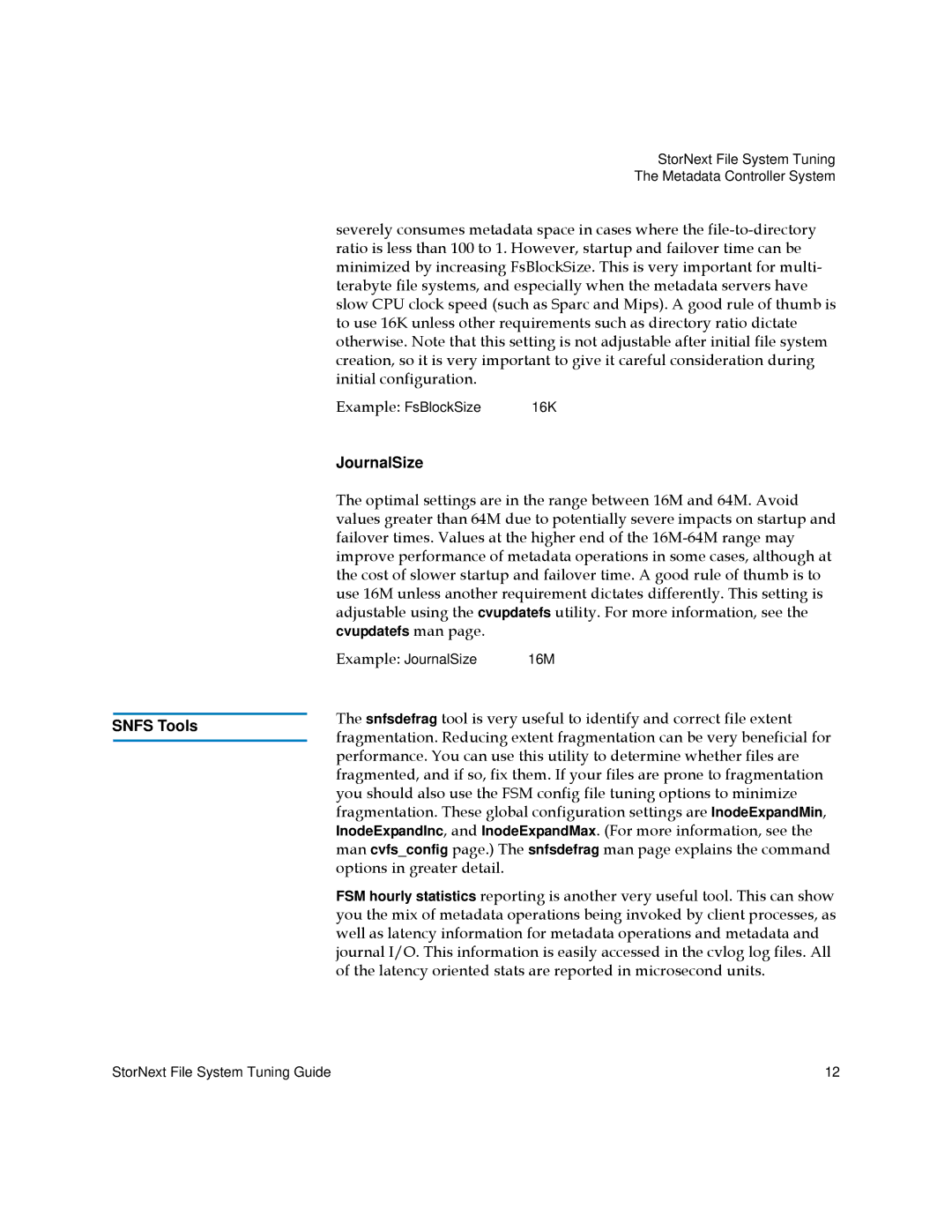StorNext File System Tuning
The Metadata Controller System
severely consumes metadata space in cases where the
Example: FsBlockSize | 16K |
JournalSize |
|
The optimal settings are in the range between 16M and 64M. Avoid | |
values greater than 64M due to potentially severe impacts on startup and | |
failover times. Values at the higher end of the | |
improve performance of metadata operations in some cases, although at | |
the cost of slower startup and failover time. A good rule of thumb is to | |
use 16M unless another requirement dictates differently. This setting is | |
adjustable using the cvupdatefs utility. For more information, see the | |
cvupdatefs man page. |
|
Example: JournalSize | 16M |
| The snfsdefrag tool is very useful to identify and correct file extent | |
SNFS Tools | ||
fragmentation. Reducing extent fragmentation can be very beneficial for | ||
| ||
| performance. You can use this utility to determine whether files are | |
| fragmented, and if so, fix them. If your files are prone to fragmentation | |
| you should also use the FSM config file tuning options to minimize | |
| fragmentation. These global configuration settings are InodeExpandMin, | |
| InodeExpandInc, and InodeExpandMax. (For more information, see the | |
| man cvfs_config page.) The snfsdefrag man page explains the command | |
| options in greater detail. | |
| FSM hourly statistics reporting is another very useful tool. This can show | |
| you the mix of metadata operations being invoked by client processes, as | |
| well as latency information for metadata operations and metadata and | |
| journal I/O. This information is easily accessed in the cvlog log files. All | |
| of the latency oriented stats are reported in microsecond units. |
StorNext File System Tuning Guide | 12 |
